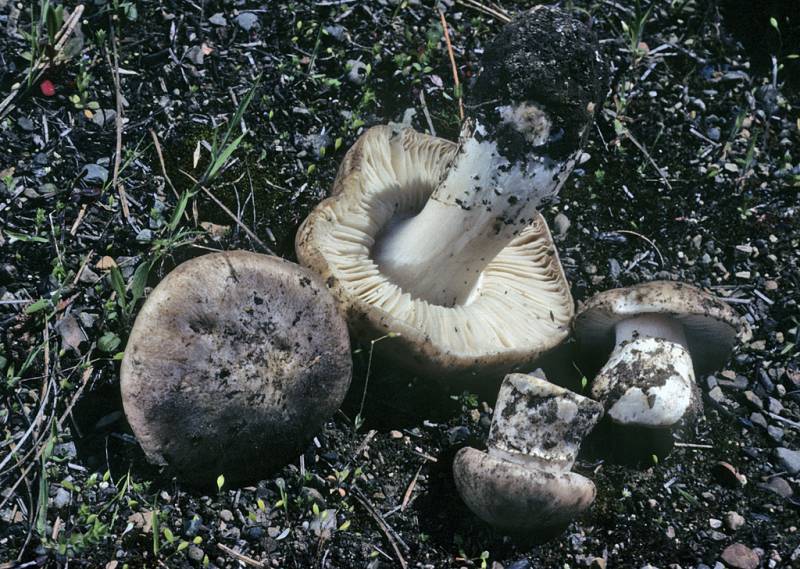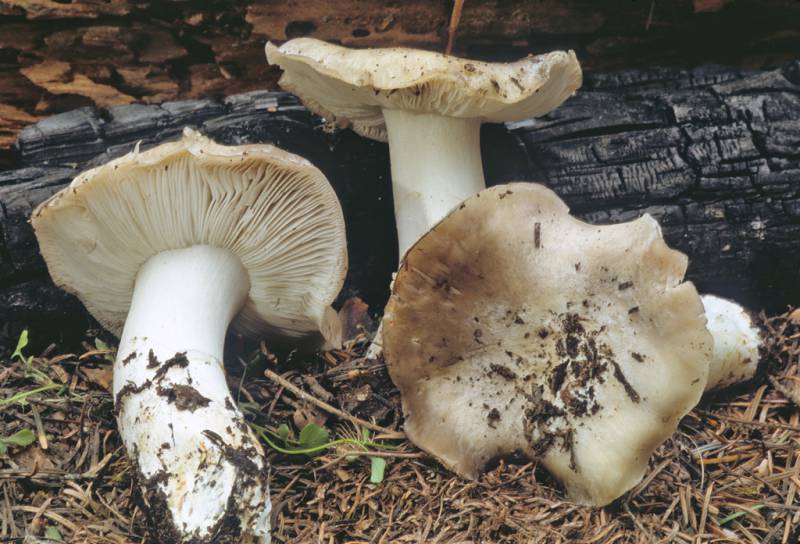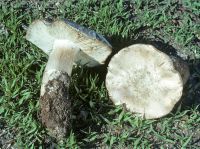Habitat: Conifers
Conservation Status: Not of concern
Cap: 5-17 cm wide, convex to broadly convex when young, becoming flattened-convex to plane; surface dry to moist but not viscid, glabrous, often with a whitish bloom at first, appearing streaked or appressed-fibrillose in age; white when young or when covered with litter, rapidly becoming fuscous to brown, often with olive, grayish, or pale tan areas; margin down-turned at first, becoming uplifted and often lobed and irregular. Flesh: thick; white; odor and taste strongly farinaceous, often like cucumber or watermelon rind. Gills: emarginate or adnate to adnexed when young, often seceding and appearing free in age, close, thick; white, sometimes becoming pale pinkish. Stalk: 4-14 cm long, 1.3-3.5 thick, equal or slightly clavate, often with an enlarged base, solid; surface dry, glabrous to silky-fibrillose above the ring, appressed-fibrillose to fibrillose-scaly below; white, staining tan to orange-brown on the lower portion; ring median to superior, fibrillose, not always obvious.
Sources: Bessette, Alan E., Arleen R. Bessette, William C. Roody, and Steven A. Trudell. Trichoolomas of North America. Austin, University of Texan Press, 2013.
PNW Herbaria: Specimen records of Tricholoma vernaticum in the Consortium of Pacific Northwest Herbaria database
CalPhotos: Tricholoma vernaticum photos






